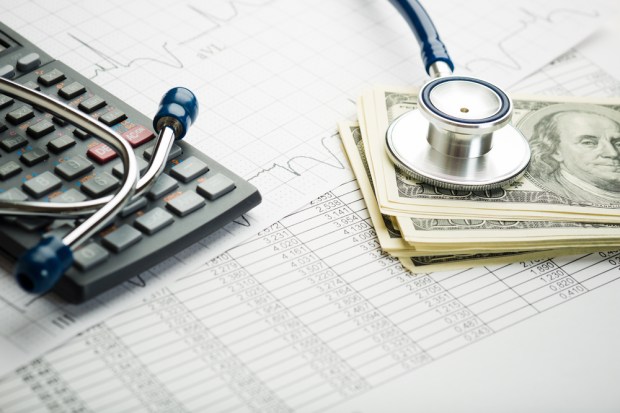Healthcare Ailing From Lack Of AR Automation

The biggest shift in the healthcare industry may not be the Affordable Care Act or its potential replacement. Instead, analysts at supply chain management company Global Healthcare Exchange say an even more disruptive force is at work: the migration from the fee-for-service business model to value-based reimbursement.
“This volume-to-value transition promises to change the fundamental paradigm through which healthcare is delivered, creating a new landscape of business requirements and risks – as well as renewed opportunities for coordination across the healthcare ecosystem,” GHX said in its latest report, “Driving Performance Through Automation.”
The analysis, published last week, surveyed 100 financial executives at healthcare suppliers to assess how companies in the vertical are reacting to the shakeup. According to the survey, 88 percent of professionals said pressure to improve cash and working capital performance will only increase this year, with nearly half expecting “substantial” increases in that pressure.
Tightened access to finance, coupled with expectations for interest rate increases, are also pressuring members of the healthcare industry to spend “much more time and attention” on cash management, researchers found, while 98 percent of respondents said cash flow and working capital improvements are critical to their companies’ growth objectives.
The receivables/order-to-cash cycle was identified by GHX as the most critical component of financial management within a healthcare supplier when it comes to achieving their cash management goals, surpassing the payables/procure-to-pay process and inventory management. But though greater management and efficiency in accounts receivable can meet the heightened cash flow demands, this space is also the most difficult to address thanks to a lack of automated solutions.
The vast majority of respondents (87 percent) said pressure within their organization to tolerate extended payment terms has increased, and 83 percent said that pressure will continue to increase in the coming year.
Most suppliers in the healthcare sector told GHX that their corporate clients have far more leverage over their preferred payment terms than the suppliers have over their own suppliers, with 55 percent noting that some clients are taking advantage of payment-related incentives (like early payment discounts) without actually honoring conditions of the agreement – and that the practice has hurt their business.
The most common challenge for healthcare suppliers when it comes to being able to influence customer payment behavior is a lack of time and resources, followed by a lack of leverage with those customers and inadequate IT systems. A lack of integrated automated systems, GHX said, is contributing significantly to suppliers’ inability to accelerate their order-to-cash cycles.
“This lack of automation is contributing to healthcare supplier spending significant time and resources resolving receivables issues, diverting resources away from more constructive, value-generating activities, such as customer service and working capital automation,” GHX said in its announcement of the report, which found that only about a fifth of respondents said automating the order-to-cash process will be among their top-two priorities in the coming year when it comes to integrating automated technologies. Financial planning and business intelligence came out on top.
The suppliers surveyed each had at least $250 million in annual sales, with some hitting up to $1 billion in annual sales. Despite the high value, a lack of payment automation is standing in the way from profits, preventing payment term standardization and more efficient contract matching, the report found.
The accounts receivables process is riddled with paper thanks to hard copies of agreements, invoices and paper checks. The majority of businesses surveyed (58 percent) said that at least 20 percent of their invoices are sent on paper. Further, 78 percent said less than half of their invoice volume is paid electronically. The vast majority (81 percent) of healthcare suppliers surveyed agreed that their business would benefit if they received more payments electronically.
“Manual processes continue to hold back the industry in terms of optimizing financial performance and efficiency, which is why we see intensified interest and activity around invoice and payment automation,” said Matt Houston, GHX’s executive director of financial services products, in a statement. “As an industry, our opportunity, and imperative, is to take a holistic approach to solving this challenge, one that involves finance, supply chain and IT teams actively engaging to drive automation across the entire eCommerce cycle. This will allow us to cut billions of dollars in cost from healthcare delivery.”
